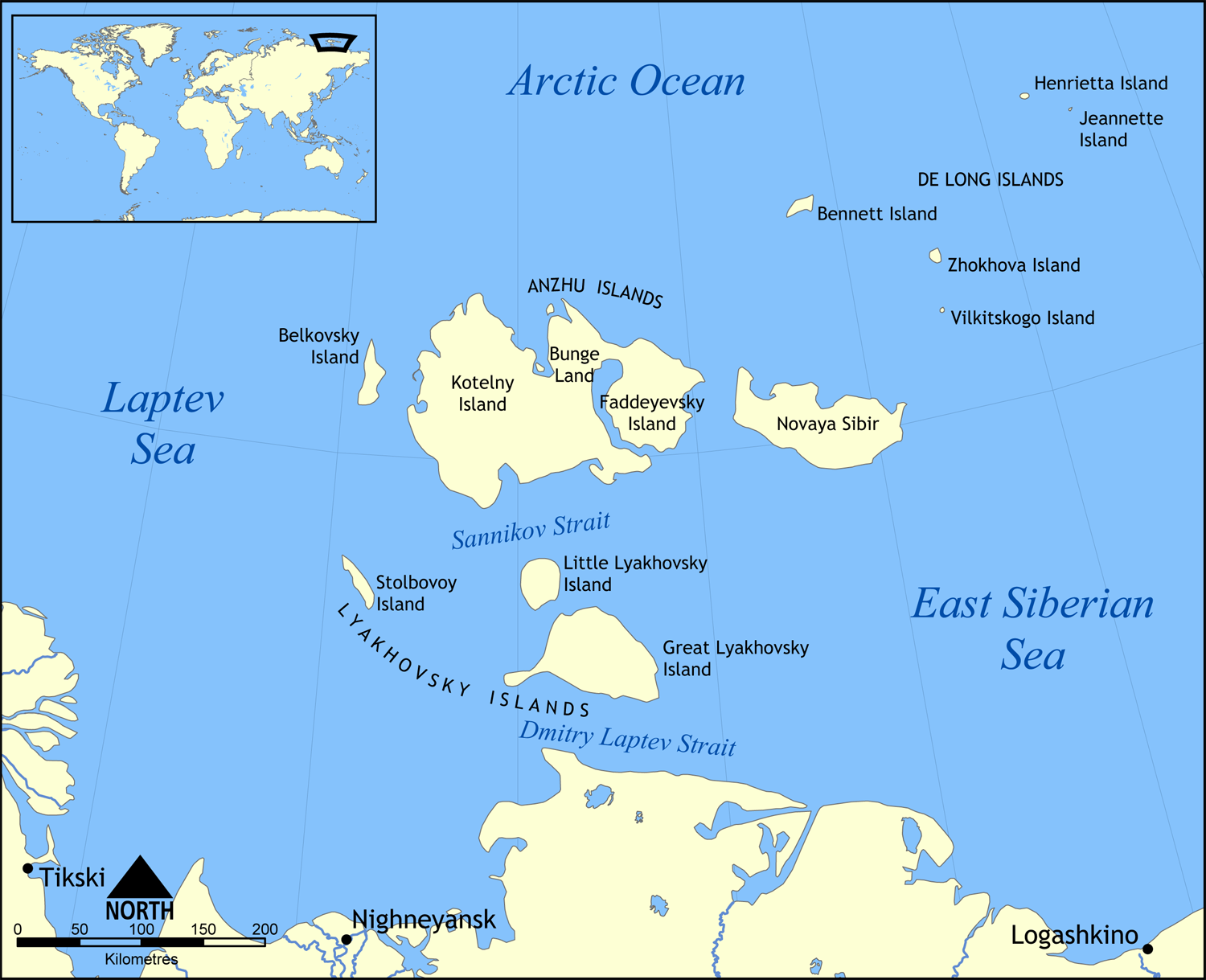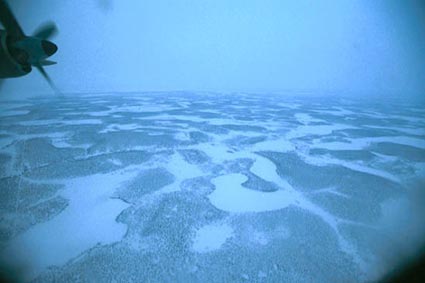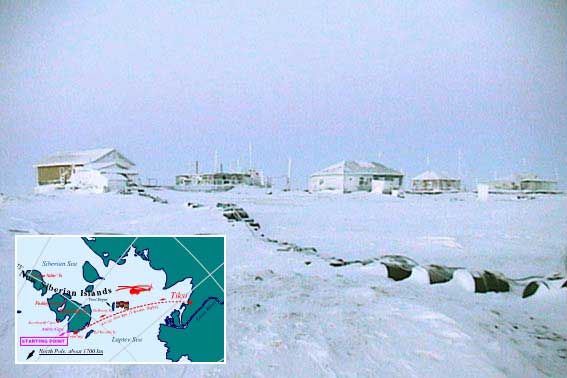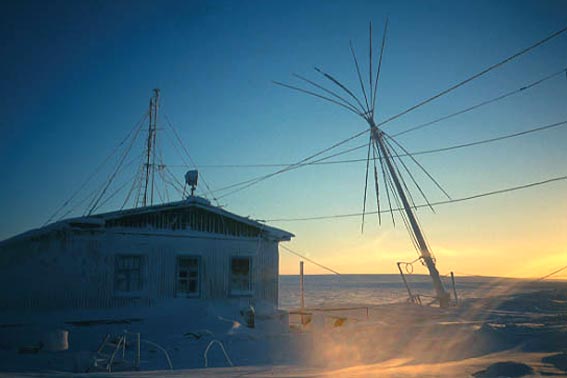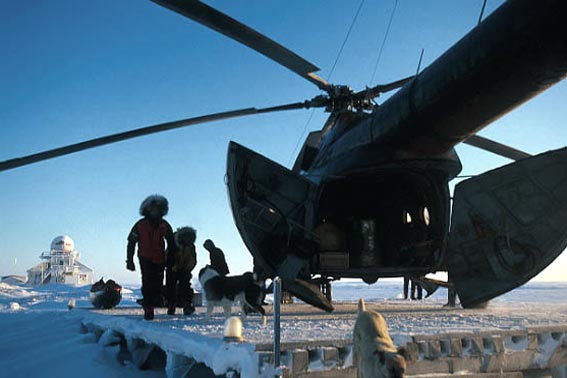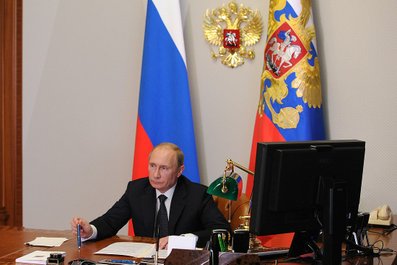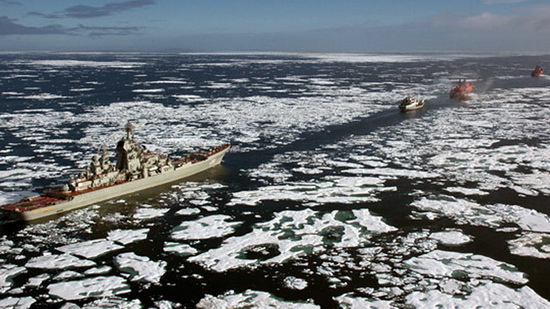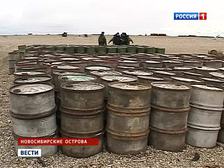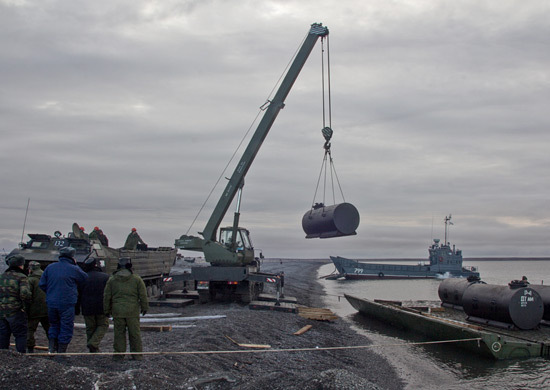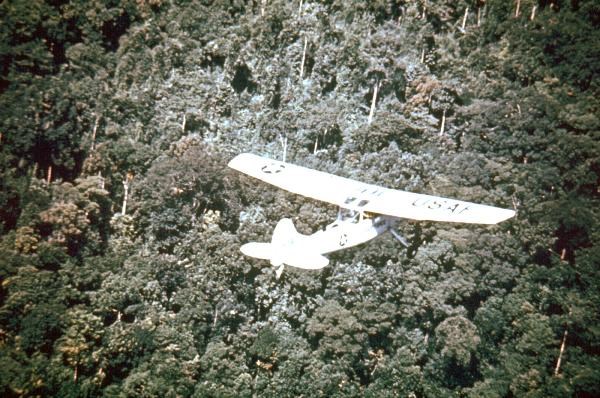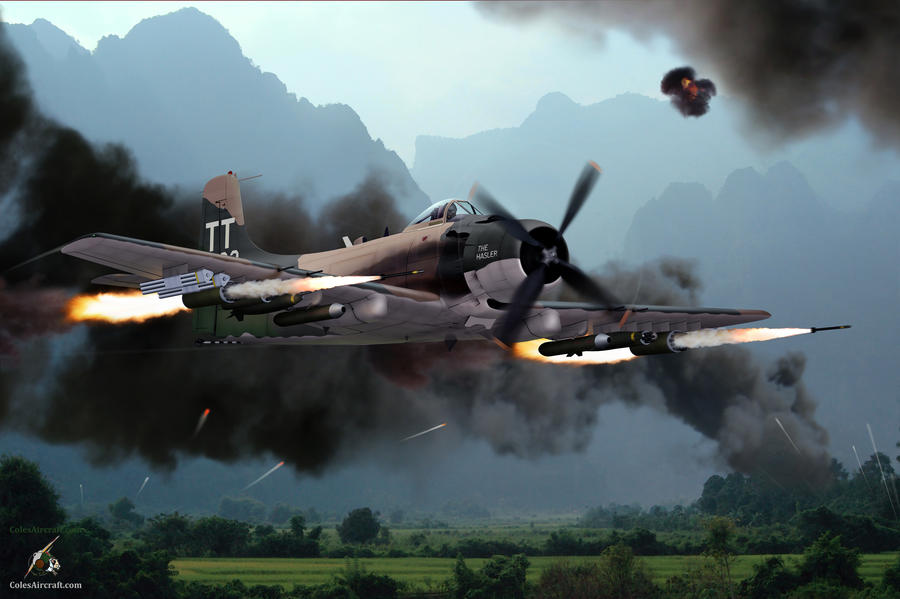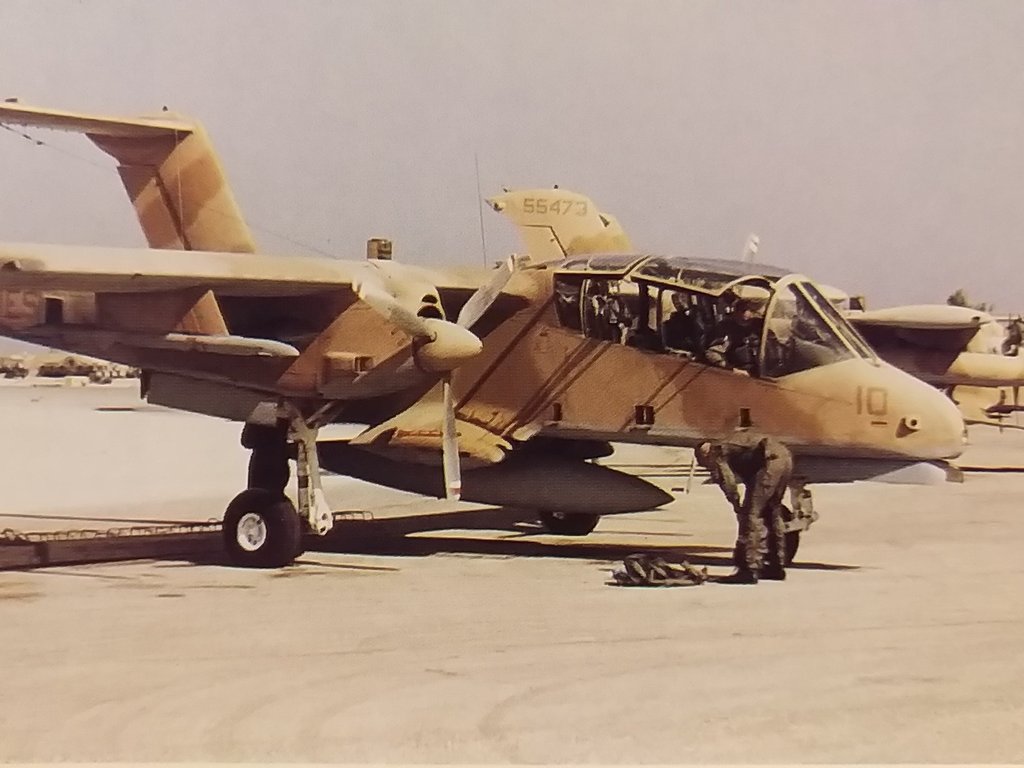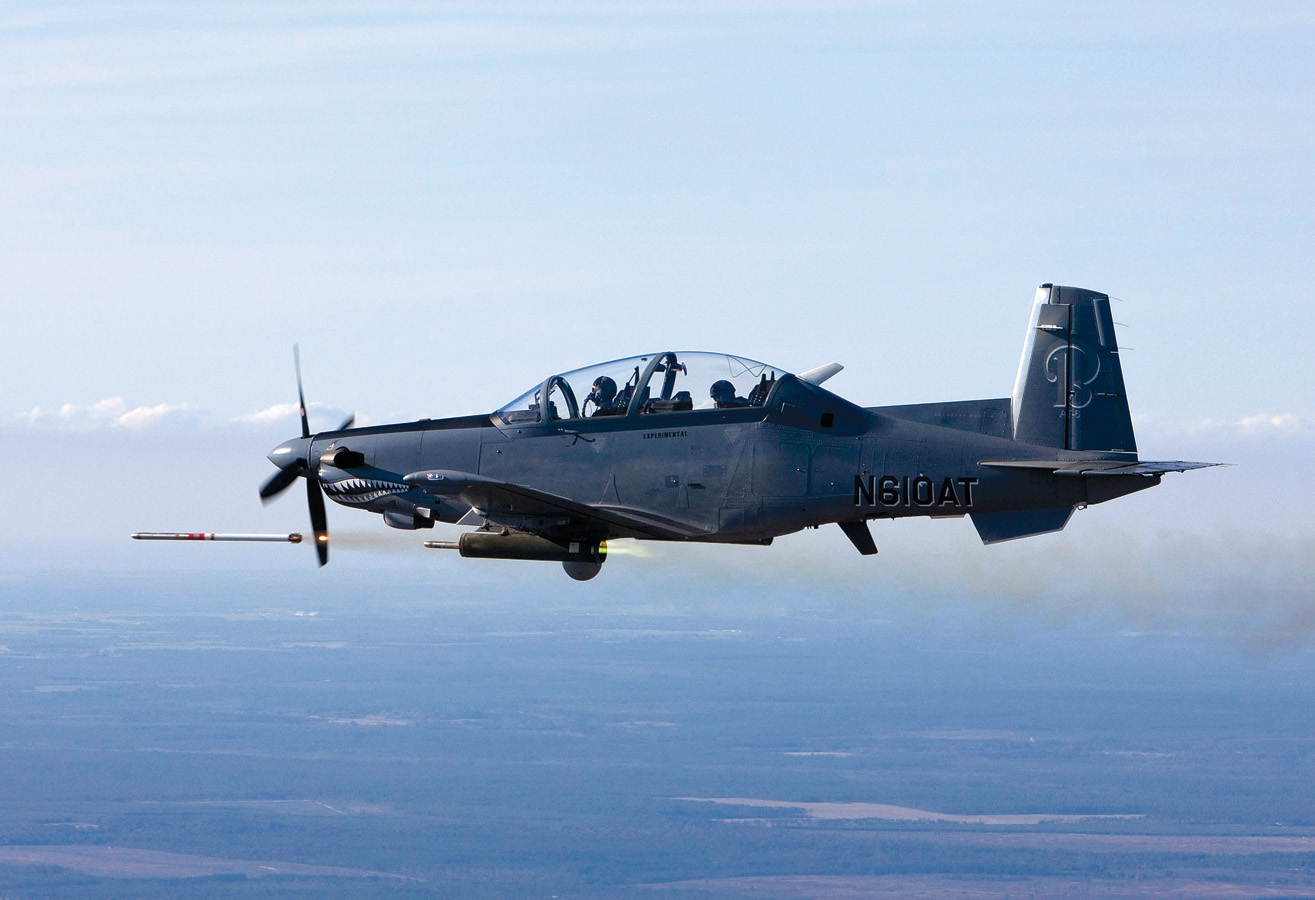Russia Back to the Artic. A military perspective
The end of Soviet Union was a desaster for their armed forces. Nuclear battle cruiser Kirov see were in very bad conditions was just one manny example how the colapse of USSR reduce the military budget (that was one third of total anual country ) to minimal and without funds the most part of the ships, aircrafts and tanks were abandon. Lots of bases were also closed.
Remote Islands like New Siberian were forgoten by the military and for decades only ice and several expeditions were made. Animal and vegetal live were subject for the "men of ciênce" and mineral prospection. Not many had permanent residents and most of them only in later spring and summer. All human lives returned to main land in fall.
One of the main atraction of this artic islands is the huge quantuty of ivory. Yes, it's true even without elephants the thousends of mammoths that died in this iced tundra give to the hunters the preserved material over the centurys, and so make from a inhospitable place a very reach (and dangerous) one.
One of the main atraction of this artic islands is the huge quantuty of ivory. Yes, it's true even without elephants the thousends of mammoths that died in this iced tundra give to the hunters the preserved material over the centurys, and so make from a inhospitable place a very reach (and dangerous) one.
The main problem in this latitude is the weather. Most of the time -40º or 50º degree, 1 or 2 feet of snow and artic night makes impossible to reach this islands. Only by plane and helicopter when there is no storm on the wind is low, like an North or South Pole base, so it is not easy tho someone lives in this conditions.
Most of the instalations were military in this part of the world and were active in cold war. With the end of Soviet Union only some of the important radar station were active in the years that folow. Even the aircraft base were substitute by Tu-95 "Bears" with fuel probes that fly from the main land and after the mission returned.
One or another radio stration was still active when artic started to be important again. The return of Russia most powerfull fleet at same time that cience try to understend what was happening to ice in north pole was an important reason to re-activeted some of the older structures. The support to the artic missions deppend on that.
For many people Artic is a region of only could ice, animal live and nothing more. The crazy ones that explore this lands are fools or cientists, specially in south pole becouse of the internacional agree that stop the intenctions by several contrys to mining the natural resorces and shere the proficts.
North is diferente, The Greenland and Northwest Territories are just two examples of someone property (Denmark and Canada), and the distance from civilization it is less than in the Antartic. Besides, the exploration is made since the last century.
So when the oil price was high and Russia had more money ( is one of the most important producers) start to show one fresh interest by the Artic exploration (that was stoped in the 90s). Civil and Military organization bigin in 2000 to have regular presence in the area and the nowhow achived in years with the ocident expeditions give to Moscow one priceless advantaged.
It is true that the resorces, territorial questions and military strategy, are all reasons to Russia fight for Artic land but for me, the main reason to re-activate Tent base and New Siberian Island is the north passage. Like Suez or Panama Canal, the country have a very important passage from Atlantic to Pacific Ocean, that for several centurys was impossible to use becouse of the ice. Today with the climatic change the navegation it is possible in the end of Spring, in Summer and bigining of fall, with the support of an Ice Breaker.
But the North Route is dangerous. First, the Russian Navy had to clear the minefield from WWII, than make the planifications to stop points in the navigation. Of course, New Siberian that is in the midle was the natural chose for an advanced base in this epic work. The problem was how to make it, and get there with staff, machinery and supplies.
In the first attempt in 2012 the helicopter crashed with no casualties. It was a prove that this was not the right way to do it and probably the solution is by the sea. But the North Fleet in the winter is in Mediterranean sea and with the civil war in Syria and the need for a reinforcement of Black Sea fleet make only a few ships in Severomorsk. Caribe cruisers to Venezuela and Cuba and the need to sea presence to americans see make several delayed in Putin plans to back to Artic.
Last days of summer it is a risk and Putin nows it. The Russian are not the American and to organize a rescue mission in the Artic if anything goes rong it´s only possible with the help of international community. The Kursk tragedy was probably the most significant demonstration of Russia decadence and if another acident like that heapens it will be a set back to Kremlin expetactions not only in the reigion but in the World to.
So the plans are carefully study and it is important that no mistakes were made. After all is the prestige of Russia that is on stage. The basic lines of this important mission is to carry men and equipment in a fleet of war and civilian ships from Severomorsk (the North Fleet Base) to the Kotelny Island. First priority is recover the aerodrome, next is to make one security place for ships to stop (a improvised port). The objective ins that in the bigining of October that planes can land there.
When it's supose that the ships arrived at 29th of September the time is very short. It´s a long journey for man and equipment in rush conditions with no garanties of good weather. The history of Murmansk is rise again, but this time the voyage is much more at north and the Russians are alone. Theres no allies and the Warsaw Pact is finish so help is not possible.
Peter the Great his leading a fleet that gives to Russia the domination of the North Route and after they reach New Seberian Island is time to recover the Temp base. It is September and ice is present, so it is a ice Breaker that just in precaution makes the way more soft. Propaganda or not the world first impression is that Artic power is possible for a few nations, but only Russians have the land bases for doing it.
No suprises with the weather and fleet advanced. The objective is again getting there in day 29 to start working in the instalations for the first planes land there in the biggining of October. With an air bridge it's more easy to bring man and soft equipment before the real cold came. Thats the plan and the Navy repeat over and over again, in Tv, Radio and in the ships.
Siberian Islands are a tundra place with not a one single tree in the midle of the Artic (Laptev and East Sibeream sea). Only in summer theres no ice but theres is cold temperature all year. Strategic place for the Artic conquest the conditions that we see in the pictures is not a problem for the Kremlin. Besides the russian trops are equiped to rush conditions and the equipment like in the past is capable of utilization in low temperatures.
But theres a few problems: The main is the erosion not only by the ice mellting but also by the sea. Several pictures in 2 or 3 years revell that the islands are srinking, not only a litlle bit but a lot. It is possible that the army engineers try to do something about that but the impact is big and the cause is that the clime is changing.
The second problem are earthquakes. In a group of islands farway from civilization, with a few structures and in artic conditions it could be mortal for the man. Siberia is not in the corner and it is dificuld to organize a rescue mission bad weather. Support bases have poor conditions and to have a helicopter or a plane it is ver difficuld. Prevention in this case is the best.
I think that the Russians now all the risk but the true is that the ships were at Siberia Islands in the last days of September. Man and heavy equipment were landing in short time. Structures were prepared and the works started at time. The impossible is now possible.
The troops could see what one decade done to equipment and other stuff left behind. But the work must be done for when the fist snow came the planes and helicopter land. Man are now protected by the construction that they have done, with all the basic needs and comunication. Probably in the future they will try to recover some of the older houses, but for now the basic is done.
Old Bear is in the artic again. Propaganda is good for the regime but the main reason is the North Passage, a natural way for ships between Atlantic and Pacific Ocean. With less ice probably not only Siberia coast but also several islands in this route will be important enterpresis and thats why at lest one more base will be recover in short time.
For now are no military reasons, besides propaganda tho Putin and the Russian Regime. In the future we don't now. With USA, Japan, China in the pacific, India, Nato, Omã and Iran in Indic and British and Americans in the Atlantic to the Russians the most chance of sucess is the Artic, military and economic. So, only future will tell if one comercial enterprise it will be transform in another east/west confrontation.


